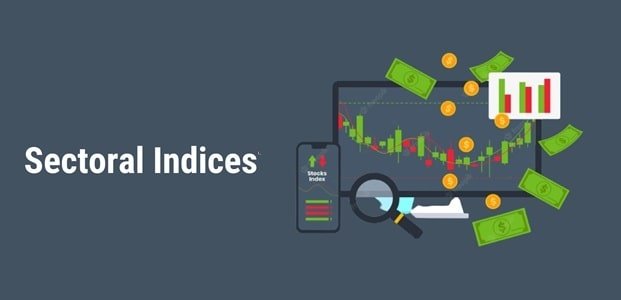The Indian Finance Ministry has unveiled an ambitious roadmap to achieve the milestone of a $5 trillion economy by the financial year 2028-29 (FY29). The plan outlines a multi-faceted strategy focusing on sustained economic growth, structural reforms, and leveraging India’s demographic dividend to create a globally competitive and resilient economy.
This vision, which has been a cornerstone of India’s economic discourse under the current government, aims to position the country as a global economic powerhouse while addressing domestic challenges such as income inequality, unemployment, and infrastructure deficits.
Key Pillars of the $5 Trillion Economy Strategy

The Finance Ministry’s plan hinges on several critical areas to accelerate growth:
- Infrastructure Development: A significant thrust will be on infrastructure expansion under initiatives like the National Infrastructure Pipeline (NIP) and PM Gati Shakti. Investments in transportation, energy, and digital infrastructure are expected to drive productivity and attract foreign investments.
- Manufacturing and Exports: The government aims to boost manufacturing through schemes like the Production-Linked Incentive (PLI) program. Focus sectors include electronics, automobiles, pharmaceuticals, and renewable energy. Strengthening exports is also a priority, with the goal of enhancing India’s share in global trade.
- Digital Economy: Leveraging technology and digital platforms is a core component of the strategy. Initiatives such as Digital India and India Stack are aimed at fostering innovation, improving service delivery, and expanding financial inclusion.
- Green Growth: Sustainability is central to the roadmap, with significant investments planned in renewable energy, electric vehicles, and climate-resilient infrastructure. These efforts align with India’s commitment to achieving net-zero carbon emissions by 2070.
- Financial Sector Reforms: Strengthening the banking and financial sector to enhance credit flow to key industries is critical. Reforms include addressing non-performing assets (NPAs), promoting digital payments, and expanding financial access for small and medium enterprises (SMEs).
- Skill Development and Employment: The government aims to harness India’s young workforce by investing in skill development programs and fostering entrepreneurship. Job creation in manufacturing, services, and agriculture is pivotal to achieving inclusive growth.
Projected Growth Drivers
India’s economic trajectory has shown resilience in the face of global challenges such as the COVID-19 pandemic, geopolitical tensions, and inflationary pressures. The Finance Ministry projects the following growth drivers as key to achieving the $5 trillion goal:
- GDP Growth: Sustaining an annual GDP growth rate of 7-8% over the next five years.
- Investment Boom: Mobilizing private and public investments to drive growth, with an emphasis on foreign direct investment (FDI).
- Rising Consumption: Leveraging India’s growing middle class and urbanization to boost domestic consumption.
- Global Supply Chains: Positioning India as a hub for global supply chains by capitalizing on the China+1 strategy and enhancing ease of doing business.
Challenges to Overcome
While the plan is ambitious, several challenges need to be addressed for successful execution:
- Global Economic Headwinds: Inflation, rising interest rates, and geopolitical uncertainties could impact trade and investment flows.
- Fiscal Deficit Management: Balancing growth-focused expenditure with fiscal prudence remains critical.
- Inequality and Poverty: Ensuring that economic growth translates into equitable opportunities and improved living standards for all segments of the population.
- Infrastructure Bottlenecks: Timely execution of infrastructure projects and addressing land acquisition and regulatory hurdles.
Progress So Far
India has made notable progress toward the $5 trillion economy target. The country’s GDP for FY24 is projected to cross $3.7 trillion, making it the fifth-largest economy globally. Key achievements include record-high FDI inflows, robust growth in the digital economy, and improvements in ease of doing business rankings.
Expert Opinions
Economists and industry leaders have lauded the government’s focus on structural reforms and growth-oriented policies but caution against complacency. “Achieving a $5 trillion economy requires consistent policy implementation, political stability, and addressing structural challenges,” noted a leading economist.
Industry stakeholders have emphasized the need for public-private partnerships and fostering a conducive environment for startups and SMEs.
The Road Ahead
The Finance Ministry’s roadmap is a bold vision for India’s economic future. It seeks to balance growth with sustainability and inclusivity while leveraging the country’s inherent strengths. However, achieving this goal will require collaboration across all levels of government, private sector participation, and a continued focus on innovation and efficiency.
As India marches toward this milestone, the $5 trillion economy by FY29 is not just a numerical target but a promise of greater prosperity, global influence, and improved living standards for its citizens.
Anantha Nageswaran is the chief editor and writer at TheBusinessBlaze.com. He specialises in business, finance, insurance, loan investment topics. With a strong background in business-finance and a passion for demystifying complex concepts, Anantha brings a unique perspective to his writing.


